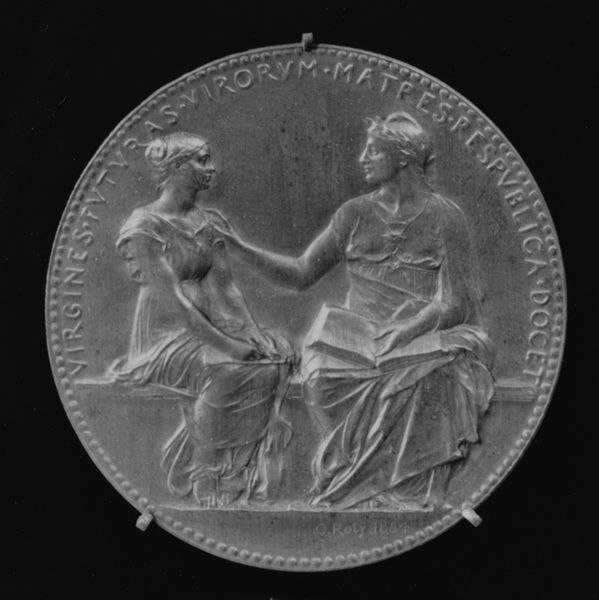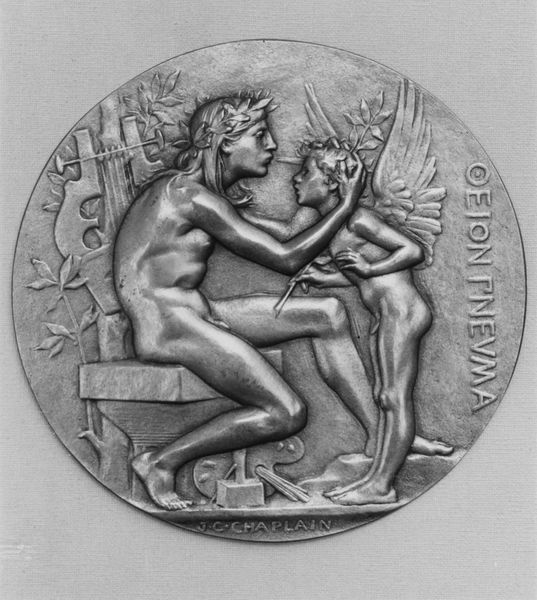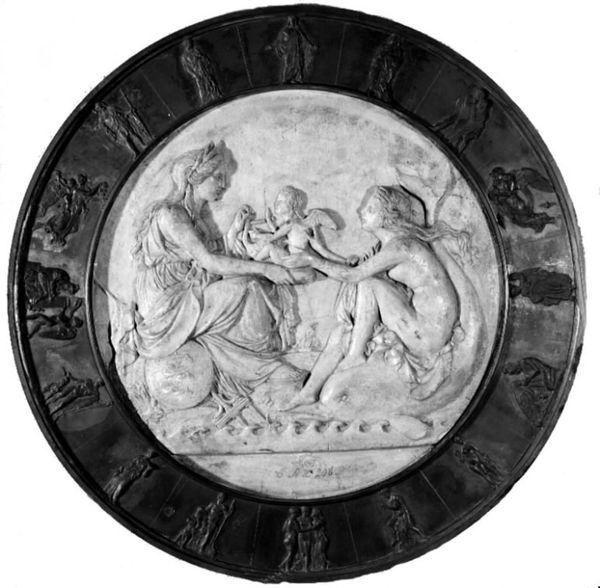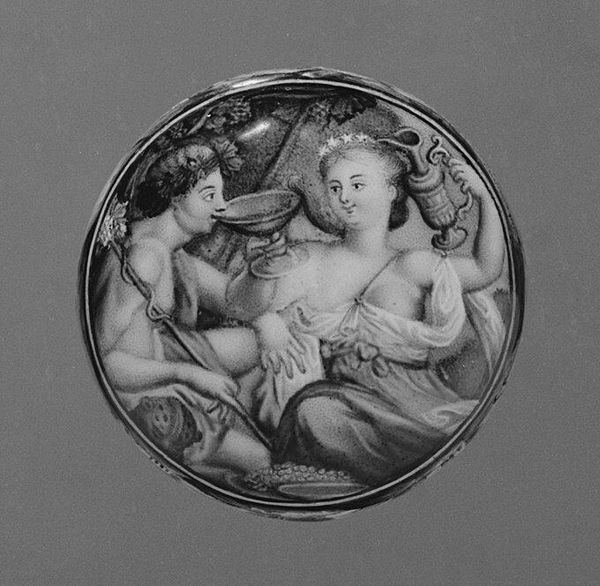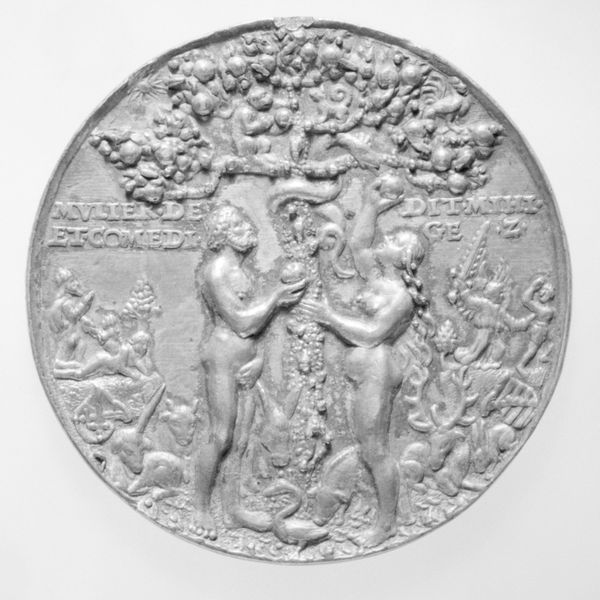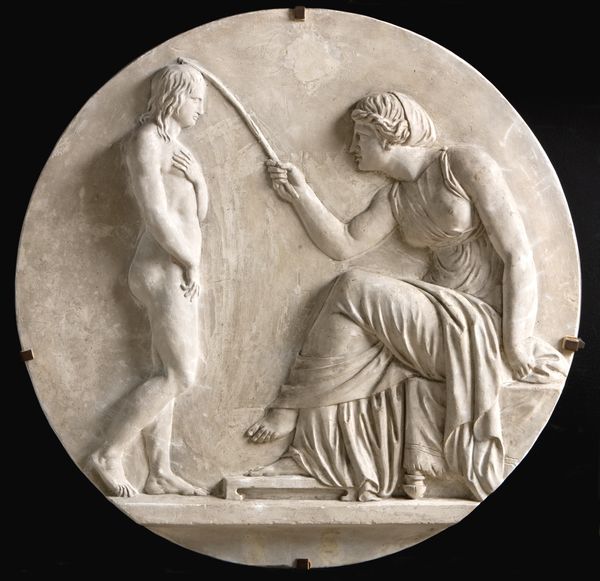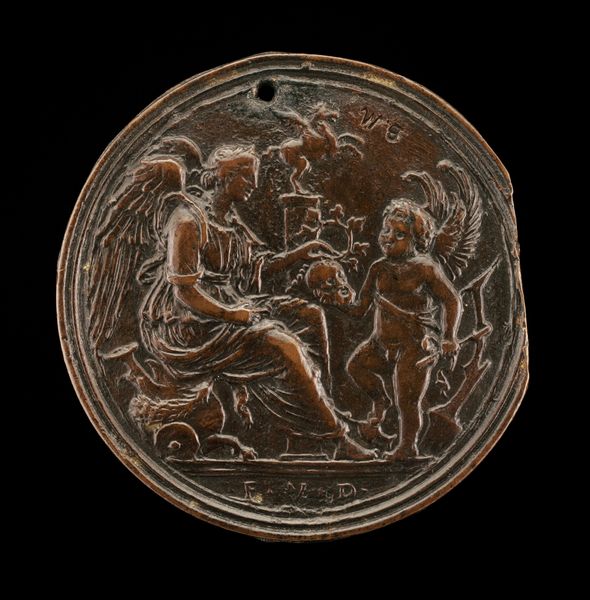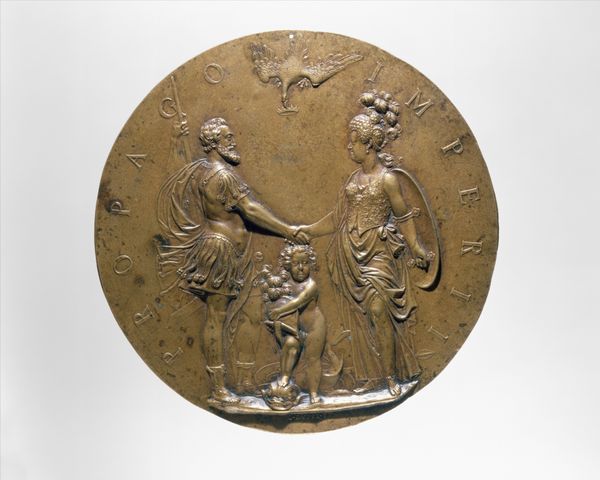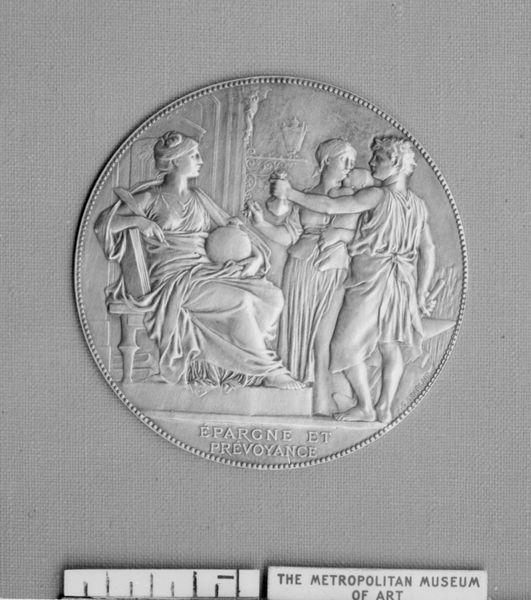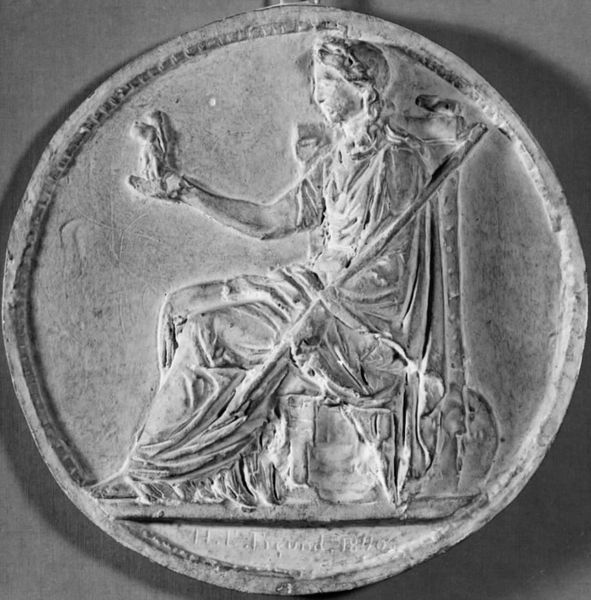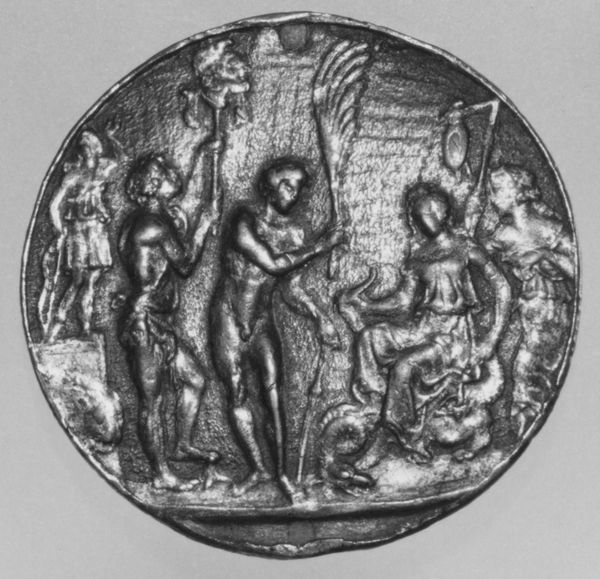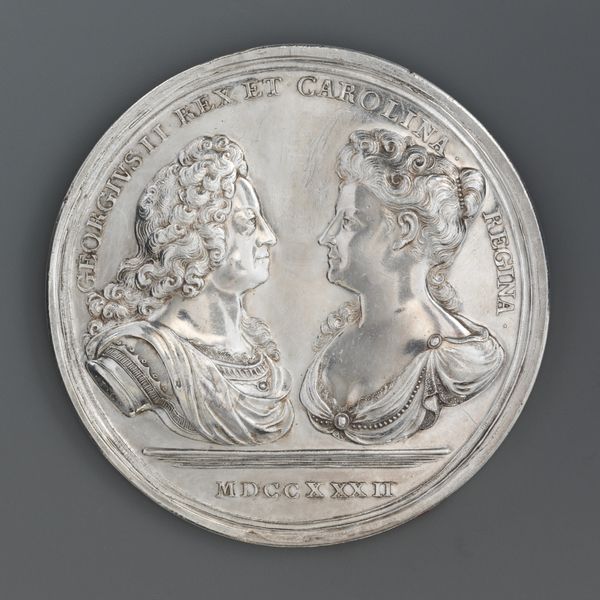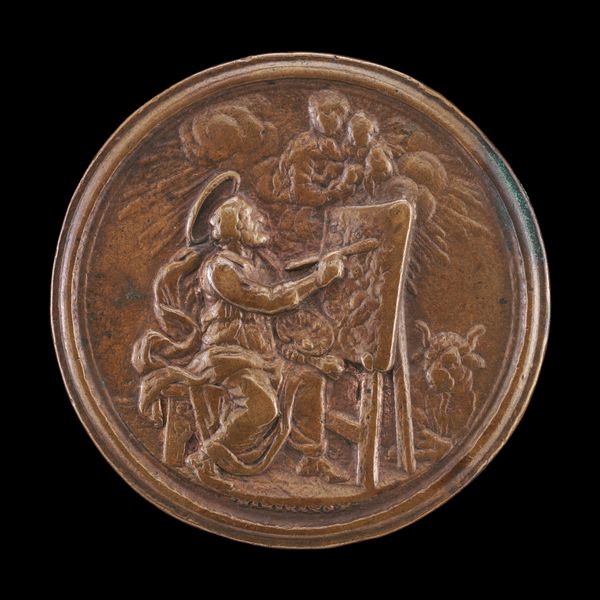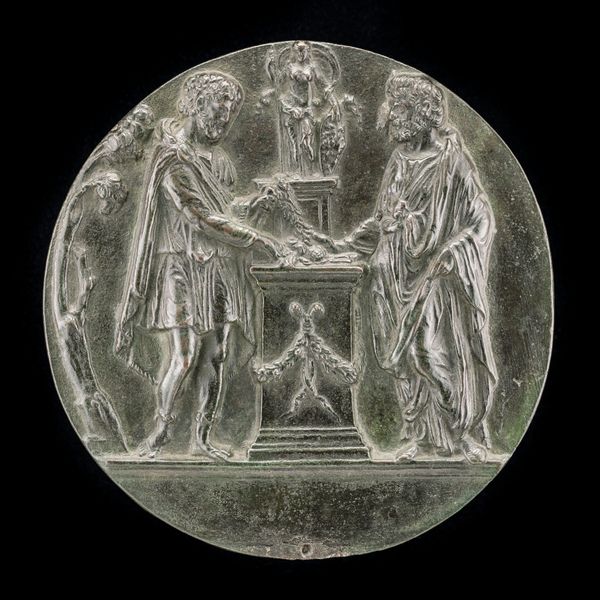
Danmark symboliseret ved en kvinde, siddende på rigsvåbnet med en bibel, foran hende står en vinget genius med fakkel 1836
0:00
0:00
relief, sculpture, plaster
#
neoclacissism
#
allegory
#
sculpture
#
relief
#
figuration
#
sculpture
#
plaster
Dimensions: 40.5 cm (None) (None)
Curator: This relief is titled "Danmark symboliseret ved en kvinde, siddende på rigsvåbnet med en bibel, foran hende står en vinget genius med fakkel," or, "Denmark Symbolized by a Woman, Seated on the National Coat of Arms with a Bible, Before Her Stands a Winged Genius with Torch." It's rendered in plaster by Hermann Ernst Freund in 1836. Editor: It feels austere. The monochromatic plaster contributes to a somber, serious mood. It looks almost like a wax seal—everything feels deliberate, contained. Curator: Freund was a prominent figure in the neoclassical movement, and you can really see that classical influence in the composition. The idealized figures, the circular format—they all hark back to ancient Greek and Roman art. But of course, the symbology is specifically Danish. Editor: I notice the woman seated upon what is meant to be the coat of arms, seemingly engrossed in reading the bible while this winged figure—is it meant to be Eros, an angel?—offers her a torch. What does that represent at this specific moment in Danish history? Curator: The torch held by the winged genius, an embodiment of enlightenment, paired with the Bible in the lap of the figure of Denmark… This underscores Denmark’s self-perception as a nation built on Christian values and guided by reason. Freund is creating a cultural artifact meant to galvanize specific social principles during his time. Editor: That emphasis can be read from various critical positions, I suppose. Perhaps this imagery suggests a nation founded on religious texts and 'enlightenment' is intentionally posed in this composition. What does this ideal exclude or silence? Curator: Right—there is something exclusionary, isn’t there, in representing a complex nation with a singular, allegorical figure like this, especially during this time of immense cultural transformation? How might alternative voices or perspectives be erased by this seemingly benevolent image of Danish identity? Editor: Absolutely. This makes you wonder how nations and their cultural icons become calcified over time, particularly when we see these images memorialized. Curator: This brief encounter has made me reflect upon what meanings can become sedimented into even the most innocuous national representations. Editor: And it certainly highlights the risks inherent when we present complex nations through narrow, singular, iconographic visions.
Comments
No comments
Be the first to comment and join the conversation on the ultimate creative platform.
